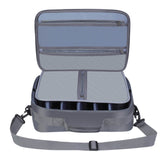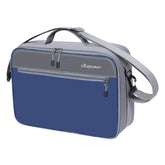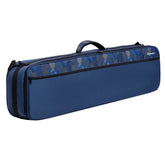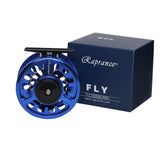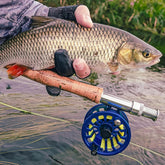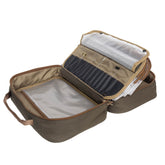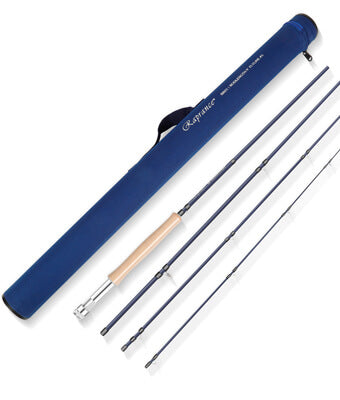Fly Line: Choosing Between Floating and Sinking Traditional Spey Lines for Steelhead
Understanding the differences between floating and sinking traditional Spey lines can significantly influence your success in fly fishing, particularly when targeting species like steelhead. Selecting the right traditional Spey fly line can enhance your casting technique and improve your overall fishing experience. I’ve often found that the right line makes all the difference in effectively delivering your fly to the desired depth.

When choosing a traditional Spey fly line, I consider factors such as water conditions, target species, and personal casting style. There are various line options available, but a solid choice for steelhead fishing is crucial. The Rio traditional Spey line stands out for its versatility and reliability, catering to both novice and experienced anglers alike.
By knowing how to match your line type with specific fishing scenarios, you can optimize your technique and increase your chances of success. Whether you prefer the buoyancy of floating lines or the depth control of sinking lines, understanding these essentials prepares you for effective spey casting and enhances your overall fishing prowess.
Fly Line Fundamentals

When selecting a Spey line, understanding its design is crucial. The choice between floating and sinking lines affects casting dynamics and presentation. Additionally, recognizing the various components that make up a Spey line system can enhance my fishing experience.
Understanding Spey Line Design
Spey lines are designed with specific components that influence their performance. The head is the front section that provides casting weight and line control. It is followed by the belly, which connects the head to the running line.
Rear taper helps in smooth line transition, allowing for longer casts. Head length varies, typically ranging from 10 to 15 feet, affecting the line’s ability to load the rod effectively. Each element plays a vital role in delivering effective presentations for various fishing conditions.
Choosing Between Floating and Sinking Lines
Choosing between a floating line and a sinking line depends on the fishing conditions and target species. Floating lines are excellent for surface presentations and when fish are actively rising. They allow for easier mending and line control, making them versatile for varying water depths.
Sinking lines or those with sinking tips like sink tips are ideal for reaching fish in deeper pools or when targeting species like steelhead. Understanding water levels and fish behavior helps in selecting the right line type. Each option has distinct advantages based on fishing scenarios.
Components of a Spey Line System
A complete Spey line system includes multiple parts that work together for effective fishing. The leader connects the fly to the line, typically ranging from 8 to 12 feet, allowing for better presentation.
Adding a tippet extends the leader further for fine-tuning the setup. Polyleaders can also be utilized when switching between floating and sinking lines. Each component is essential for effective casting and fish-catching precision, ensuring that I maximize my tackle’s potential.
Advanced Spey Line Considerations

When selecting a traditional Spey line, I find that several advanced factors come into play. Key considerations include the choice between Skagit and Scandi lines, the importance of sink rates, and the versatility offered by interchangeable tips.
Skagit Versus Scandi Lines
I often weigh the benefits of Skagit and Scandi lines based on my fishing conditions. Skagit lines generally feature a heavier head, ideal for casting larger flies and managing fast water. They excel in shorter casting distances and allow for quick turnover.
On the other hand, Scandi lines have a longer, lighter head, which excels at delicate presentations. They adapt well to longer casts and offer better line control on the water. I usually choose Skagit in challenging conditions and Scandi when I need finesse.
The Role of Sink Rates in Fly Line Selection
Understanding sink rates is crucial for effective fly presentation. Floating lines keep my fly near the surface, while sinking lines help reach deeper waters, particularly when fishing for steelhead.
I typically consider the water depth and current speed. Sinking rates vary significantly, from slow sinkers that gradually pull my fly down, to fast sinkers that quickly reach the desired depth. Sinking polyleaders can enhance versatility, enabling the use of various sink rates depending on my target species’ behavior.
Interchangeable Tips and Versatility
The use of interchangeable tips greatly enhances my Spey fishing experience. Multi-tip lines allow me to adapt quickly to changing conditions without needing different setups. I often rely on loop-to-loop connections for seamless transitions between floating and sinking tips.
Utilizing polyleaders provides an additional layer of adaptability. I can switch between various leader styles to suit my needs. This versatility gives me greater control over my fly's action and sink rate, making it easier to target specific depths and conditions.
Mastering Spey Line Techniques
To effectively utilize floating and sinking traditional Spey lines, I focus on specific casting styles, presentation strategies, and double-handed rod dynamics. Mastering these elements enhances my effectiveness on the water, ensuring that I make the most of each fishing opportunity.
Optimizing Casting Style for Line Type
When I choose a Spey line, I adapt my casting technique to match its characteristics. For floating lines, I often employ a single Spey or snap T cast, which facilitates smooth line management on the water’s surface.
With sinking lines, I often favor the D loop technique to ensure adequate load on my rod, allowing for a powerful forward stroke. Adjusting my stroke length according to the line weight optimizes energy transfer and minimizes fatigue.
Understanding the buoyancy and sink rate of my chosen line informs my casting rhythm, enhancing accuracy and distance. Practice is essential; I frequently adjust my casting style based on real-time feedback from my line’s performance.
Presentation Strategies
Effective presentation is crucial in enticing fish. With floating lines, I focus on mending techniques to control my line's drift. This helps in presenting my fly naturally across the current.
For sinking lines, I pay attention to the depth at which my fly is presented. I use varying retrieve speeds to mimic prey and adjust my technique based on the fish’s activity levels.
I often experiment with different angles of approach, ensuring my fly enters the water stealthily. Attention to details like the water temperature and current speed influences my presentation choices, ensuring I remain adaptable and responsive.
Double-Handed Rod Casting Dynamics
Using a double-handed rod can significantly impact my casting effectiveness. The length and action of the rod provide leverage that enhances casting distance and control.
I find that varying my grip and stance creates different angles of launch, allowing me to fine-tune my casts. For instance, applying a firmer grip on the bottom handle can promote better line speed and turnover.
The double-handed rod also allows for intricate casts like the touch and go, which is beneficial for tight spaces. Each cast is a balance of precision and power; honing this balance is key to mastering techniques with traditional Spey lines.

